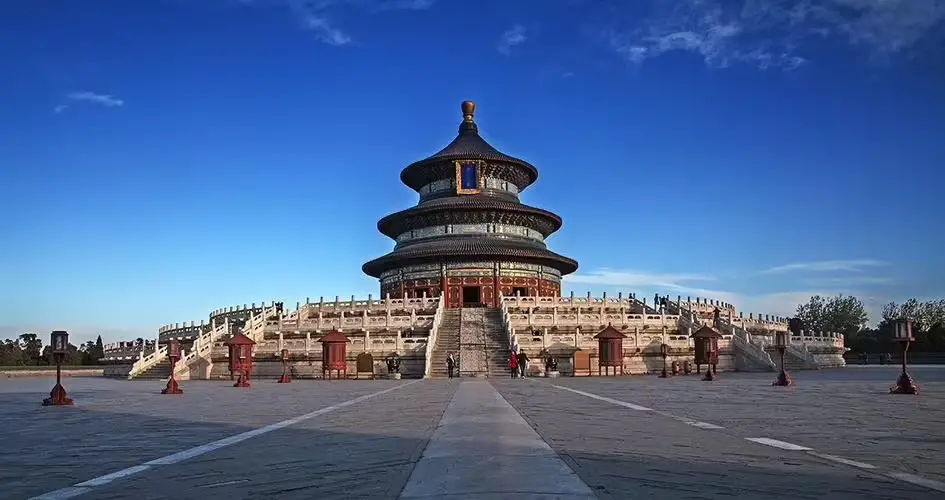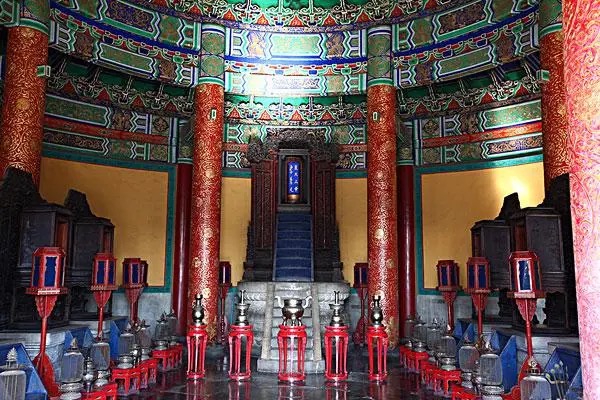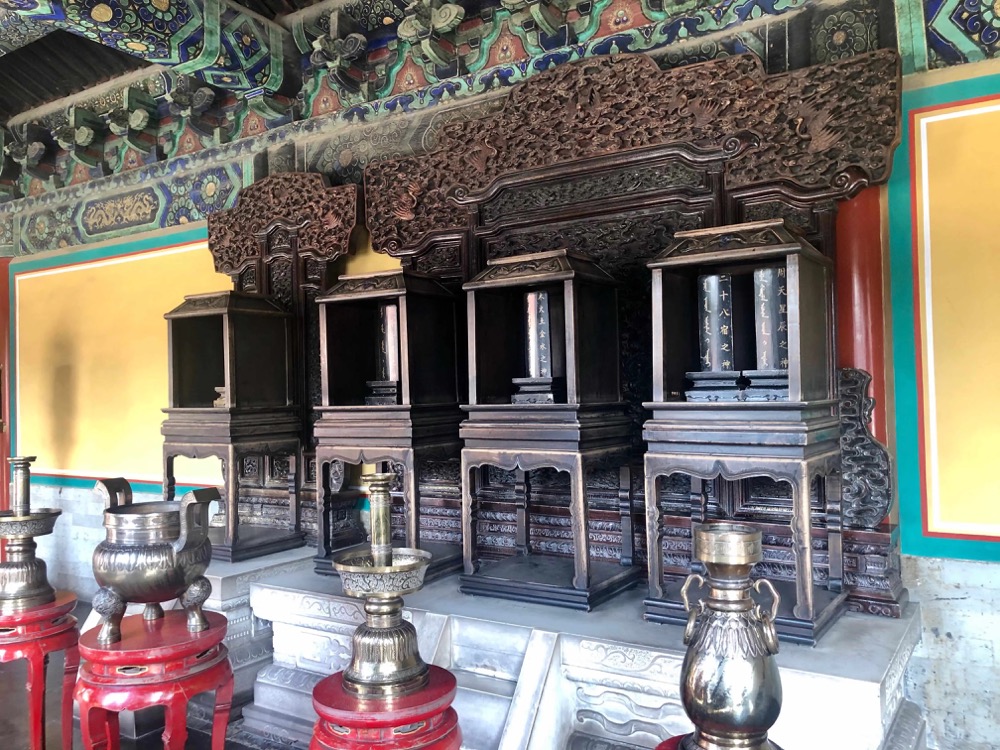Spanning 273 hectares in area, the Temple of Heaven is among the most famous landmarks in China and is worth visiting due to its unique history. The magnificent complex is a stunner to many for its elegance and size. In this article, we will examine interesting facts about it.
What is the Temple of Heaven in China?

Also known as the “Altar of Heaven,” the Temple of Heaven is a complex of religious-themed buildings. It is the largest area in the world dedicated to heavenly worship, is considered the most outstanding achievement of Chinese architecture, and was frequently visited by emperors in the Ming and Qing dynasties of China (between 1420 and 1900). Its design symbolized the common belief that the Earth is a square and Heaven is round.
The Emperor and his entire court would visit the Temple complex several times a year – at the beginning of the lunar year (January or February), on the summer solstice (June 21st or 22nd), and on the winter solstice (December 21st or 22nd). The Emperor would offer sacrifices and pray for bountiful harvests by strict adherence to certain rituals.
Where is the Temple of Heaven in China?

The temple complex is located in the southeastern part of Beijing and was declared a UNESCO Heritage site in 1998. The specific region it is in is the southern Dongcheng District, and it is open to the public every day from 6 am to 10 pm, with entry charges varying on whether it is peak or off-peak season. The park hosting the temple site is very accessible by public transport and foot.
How big is the Temple of Heaven?
The total area of the Temple of Heaven is about 273 hectares (1.05 square miles or 2.73 km2), which is twice the size of Hyde Park or similar to New York’s Central Park. This area comprises a courtyard and three interconnected circular buildings in a straight line.
When was the Temple of Heaven built?
The Temple’s construction spanned between 1406 and 1420. Initially, it was not called the “Temple of Heaven” during its construction; this name came later in the 16th Century during the reign of the Jiajing Emperor. This ruler also built three additional temples to serve similar purposes: the Temple of Moon in the west, the Temple of Earth in the north, and the Temple of Sun in the east.
The Temple of Heaven went through several renovations. The first time was during the reign of the Qianlong Emperor in the 18th Century. However, parts of the Temple suffered neglect or were destroyed after the Boxer Rebellion, leading to the second renovation in 1914. In 1918, the Temple complex was converted into a park, and the public was allowed access.
What religion is the Temple of Heaven?
The Temple of Heaven is known as a Taoist temple, as its constituent buildings were built using the principles of Taoism. However, it can also be considered a temple dedicated to Chinese Heaven worship, which pre-dated Taoism and held to the belief that Emperors were the “Sons of Heaven” appointed by Heaven to rule over the people.
Why is the Temple of Heaven important?

The Temple was important because its design symbolized the mystical relationship between Heaven and Earth that governed the universe. Its aura was enhanced through ancient tenets, music, and sacrificial ceremonies.
Today, its importance lies in its cultural and architectural significance, offering a window into China’s past and appreciating its religious and political history.
Who built the Temple of Heaven?
The Yongle Emperor (the 3rd Emperor of the Ming Dynasty) was the ruler responsible for endorsing the project’s construction. This was an additional project he did aside from the construction of Beijing’s Forbidden City.
What was the particular purpose of the Temple of Heaven?
It was the holiest place in China, and Emperors regarded it as a place where they could perform their most religious activities on behalf of the nation. Since they saw themselves as the “Sons of Heaven,” they used it as a method of asserting their status as representatives of Heaven.
What was the Temple of Heaven used for?

From its construction until the end of the Chinese Imperial Era (1900), it was used as a religious building where the Emperor visited with his court in a closed procession and offered sacrifices and prayers to ensure a good harvest or perform thanksgiving ceremonies. After the imperial era ended, the Temple was used by foreign powers as the Boxer Rebellion raged on, causing certain sections to be destroyed and others to fall into disrepair.
What does the Temple of Heaven look like?
The Temple does not comprise one building but three circular buildings (representing Heaven) that are interconnected and closely related to the square courtyard (representing Earth).
Other areas are the four gates that permit entry into the park – the West, East, South, and North gates, and each building within the complex has certain unique details and common features with the other buildings. These buildings are:
The Hall of Prayer for Good Harvest
This was traditionally the site where the Emperor would perform a prayer ceremony during the beginning of the winter solstice to request a great harvest the following year.
The building is unique because it did not use cement for its structural integrity – instead, it was constructed on a marble foundation and used wood for the frame.
The Imperial Vault of Heaven
This building was a smaller form of the Hall of Prayer for Good Harvests, as it was a circular building with a marble foundation. It was different due to its smooth inner wall that could transmit echoes across long distances and was connected to the Hall of Prayer by a 360-meter bridge called the “Vermillion Steps Bridge.”
The Circular Mound Altar
This was the altar section of the Temple and was directly south of the Imperial Vault of Heaven. It was built in 1530 by the Jiajing Emperor and restored in 1740.
What is the Temple of Heaven used for today?
The Temple of Heaven has gone through several restorations during its existence, with the most recent happening in 2005 as the government was preparing facilities for the 2008 Beijing Summer Olympics. This renovation cost $5.9 million (47 million yuan) and was completed in 2006.
This allowed for its use today as a sporting and recreational complex, mostly used for practicing a paddleball form of Tai Chi known as “taiji bailong ball .”It also hosts open spaces and playgrounds frequently used for ethnic dances, cultural presentations, and choral shows.
Conclusion
The Temple of Heaven has a long and fascinating history and is worth visiting because of the significance it has in the history of China. This Chinese historical site has been around for centuries and continues to enhance the rich Chinese culture to date.